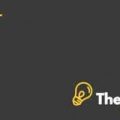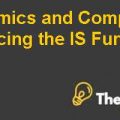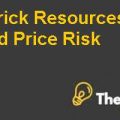
Mernards:
After Lowe’s, the next competitor for Home Depot in line was Mernards which is more small but yet more focused in geographical terms. The company had annual sales of around $4 billion along with 2.5% share in the market. In addition to that, the company operated solely in quite a few Mid-western states and does have strong and loyal customers. In some parts of home improvements, Mernards had more market share than Home Depot.
HomeBase:
Another competitor, HomeBase which had around $1.5 billion of annual sales and next to nothing in terms of market share had their operation in various western states. The size of the stores is similar to the ones of Home Depot.
Hechinger:
The company was initially known to be a prime competitor of Home Depot in terms of market share and profitability as well, but later the company lost its share in the market when it tried to copy the format used by Home Depot. By the end of 1999, the company became completely diluted and went out from the home improvements market.
Financial Analysis:
Ratio Analysis:
The debt to equity ratio is the one that show a relative portion of the total percentage of equity or debt used by the owners of the company. Further, this ratio helps in identifying the amount of debt or equity required to finance the assets of the company. On the other hand, the profitability ratios identify the profitability in the total equity of a company. Along with that, the company’s debt to capital ratio gives an overview about the financial structure of the company. For example if debt to equity ratio of a company is high then it is showing the company has financed its business more from debt rather than equity.
|
Ratio Analysis |
|||
|
1999 |
2000 |
2001 |
|
| Current Ratio |
1.73 |
1.75 |
1.69 |
| Return on Assets |
12.0% |
13.6% |
13.1% |
| Profit Margin |
5.34% |
6.04% |
5.84% |
| Return on equity |
18.5% |
18.8% |
18.2% |
| Quick ratio |
0.22 |
0.25 |
0.24 |
| Debt/ Equity Ratio |
0.541 |
0.384 |
0.384 |
| Debt/ Total Capital |
0.176 |
0.081 |
0.072 |
| Sales/ Asset Ratio |
2.24 |
2.25 |
2.25 |
DuPont Analysis:
DuPont is known to be an extra simplification of return on equity into more than one part. It breaks return on equity into three parts. With the help of this break-up, the financial analyst better understand the profitability of each and every ratio. ROE can be calculated as profit margin time’s asset turnover times Equity equity multiplier. Profit margin can be further calculated as net profit over sales while asset turnover can be calculated as sales over assets and equity multiplier can be calculated as assets over total equity. The DuPont analysis of the company has been shown below.
|
DuPont Analysis |
|||
| Year |
1999 |
2000 |
2001 |
| Profit Margin |
28.5% |
29.7% |
29.5% |
| Asset Turnover |
2.24 |
2.25 |
2.25 |
| Equity Multiplier |
1.54 |
1.38 |
1.38 |
| ROE |
18.5% |
18.8% |
18.2% |
| Operating ROA |
19.71% |
22.27% |
21.55% |
Return on Equity:
Return on equity measures the rate of profit for the possession interest (shareholders' equity) of the normal stock holders. It measures an association's effectiveness at producing benefits from each unit of shareholders' equity (otherwise called net stakes or holdings short liabilities). ROE demonstrates how well an organization utilizes venture stores to create profit development.
Profit Margin:
Home Depot was going better in terms of profit margin as the growth is found to be steady over the years. In addition to that, the profit was further on an increasing trend.
Asset Turnover:
Asset turnover is a ratio which identified the efficiency of the business by evaluating the assets of the company and the money generated from it. The profitability of a business and asset turnover is directly linked with the company’s profitability.
Return on Assets:
The Return on assets ratio shows the profitability, which a company is getting from its assets. It basically identifies the percentage profitability of producing money from the assets of the company. It describes the value of one dollar earn with an asset of $1.
Risk Analysis:
Risk analysis analyzes the vulnerability of income streams for the aggregate firm and for the distinctive wellsprings of capital. The common methodology looks at the main considerations that cause an association's pay flow to shift. More unpredictable income streams mean more terrific danger.
Business Risk:
Business risk is known to be a risk related with the operating income of the company. The calculations for the business risk can be done on the operating firm over the period of time.......................................
This is just a sample partial case solution. Please place the order on the website to order your own originally done case solution.











